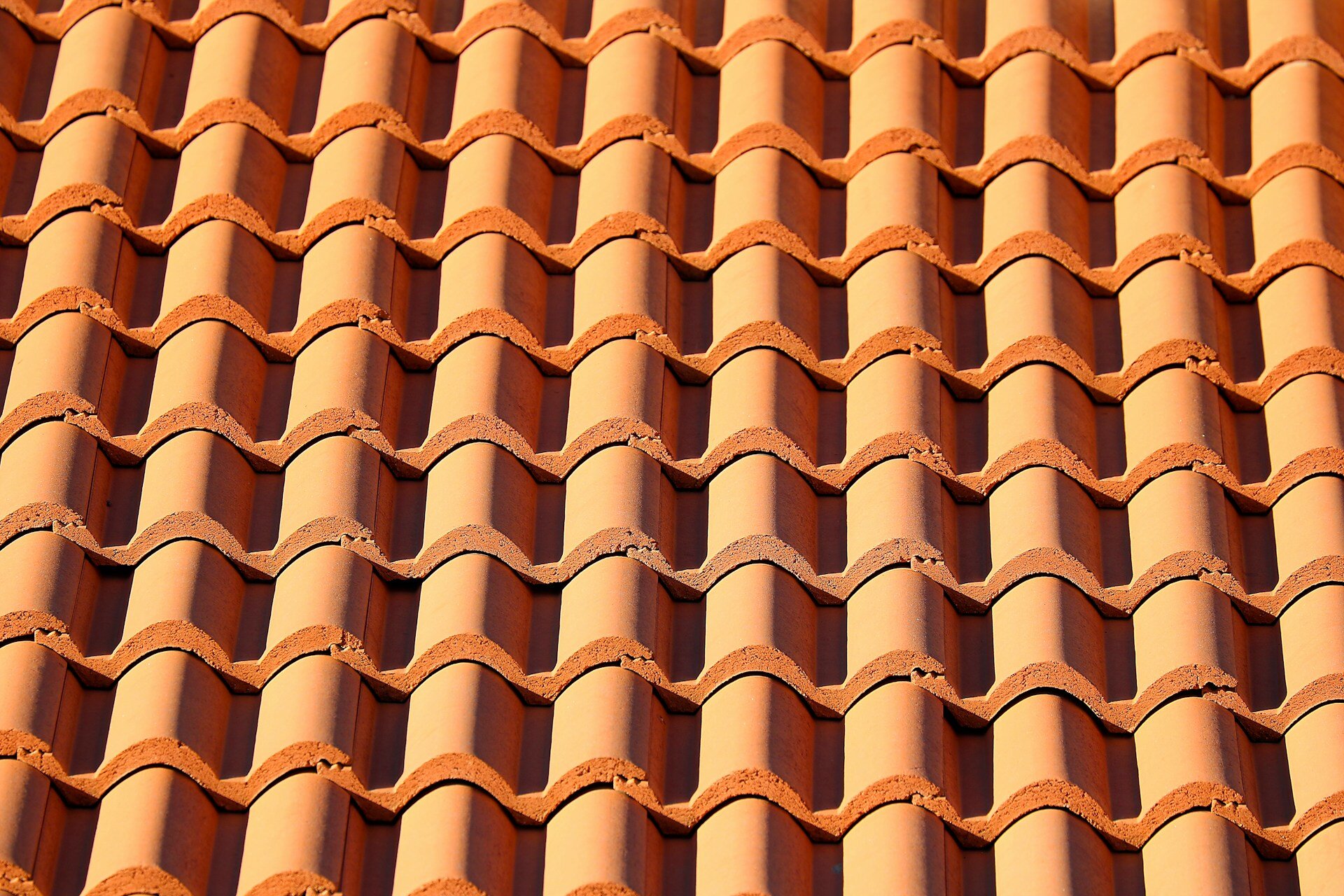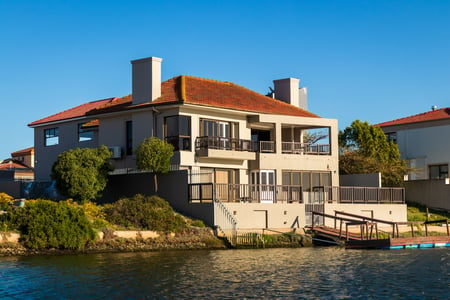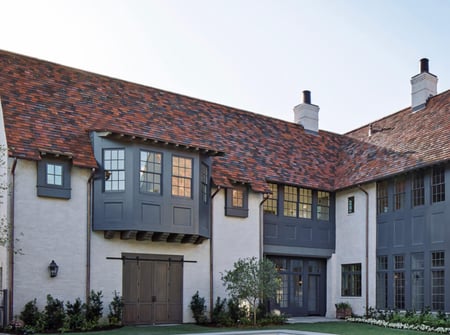The Pros & Cons of Spanish Tile Roofing for Southeastern Homes
June , 2024 | 9 min. read
By Kevin Mills

When it comes to choosing the perfect roofing material for your home, the options can be overwhelming. If you live in the Southeast, you may have noticed a trend towards Spanish tile, often known as clay tile roofs. Their intricate details and bold, beautiful colors are certain to make anyone in the neighborhood envious of your home.
But, are they the right choice for you? At RoofCrafters, we’re big fans of the classic clay tile look, but we also know that like just about anything in this life, this roofing material comes with its own unique list of pros and cons.
That being said, if you’re interested in clay tiles for your humble Southeastern abode, and you’re looking to compare and contrast these bad boys, you’re in the right place! Stick around until the end of this article to learn more about their pros and cons, and whether or not this material is the best option for you. Let’s get started!
The Pros of Spanish Tile Roofs in the Southeast

One of the standout features of clay tile roofs is their impressive durability. Unlike other roofing materials that may need replacing every 15-20 years, clay tiles can last for 50 to 100 years with proper maintenance. This is particularly advantageous in the Southeast, where the climate can be both hot and humid, as well as prone to severe weather events like hurricanes. Clay tiles are resistant to the kind of wear and tear that can quickly deteriorate other materials.
Energy Efficiency
Clay tiles are excellent insulators. In the Southeast, where as we all know, the summers can be sweltering, clay tile roofs help keep your home cooler by reflecting a significant portion of the sun's heat. This can reduce your reliance on air conditioning, leading to lower energy bills. Additionally, the natural air circulation between the tiles and the roof deck can help further reduce heat transfer into your home.
Aesthetic Appeal
Clay tiles are often chosen for their classic and elegant look. They can add a touch of Mediterranean or Spanish flair to your home, which can significantly boost curb appeal and, by extension, property value! The variety of colors and styles available means you can find a design that complements the architectural style of your home.
Fire Resistance
In regions like the Southeast where wildfires, though rare, can occur, clay tile roofs offer excellent fire resistance. Clay tiles are non-combustible, which means they provide an additional layer of safety for your home. This fire resistance can also potentially lower your homeowner's insurance premiums.
Sustainability
Clay tiles are made from natural materials, making them an environmentally friendly roofing option. Unlike synthetic materials, clay is abundant and recyclable. At the end of their lifespan, clay tiles can be crushed and repurposed, reducing waste and minimizing the environmental impact. In the Southeast, where sustainability is increasingly important, choosing clay tiles aligns with green building practices and contributes to a lower carbon footprint.
Natural Ventilation
The clay tiles' design allows for natural ventilation between the roof deck and the tiles themselves. This natural airflow can help to regulate temperature, reducing the heat island effect often associated with urban areas in the Southeast. By choosing a roofing material that promotes ventilation, you can enhance your home's energy efficiency and comfort.
Positive Impact on Local Ecosystem
When considering roofing options, it's essential to think about their impact on the local ecosystem. Clay tile roofs have a relatively low impact because they don’t require the extraction and processing of petrochemicals like some synthetic materials. Moreover, the longevity of clay tiles means less frequent replacements and less environmental disruption over time.
The Cons of Spanish Tile Roofs in the Southeast

One of the most significant disadvantages of clay tile roofs is their upfront cost. The materials themselves are more expensive than other roofing options like asphalt shingles. Additionally, installation is labor-intensive and requires skilled professionals, which can drive up the overall cost. However, considering their longevity, the long-term cost can balance out the initial investment.
Weight Considerations
Clay tiles are heavy, often requiring additional structural support for your home. This means that if you're replacing an old roof, your house may need structural reinforcements to handle the weight, which adds to the overall cost. This can be a significant consideration, especially for older homes in the Southeast, where structural modifications might be necessary to accommodate the extra load.
Fragility and Maintenance
While clay tiles are durable, they can be fragile when it comes to physical impact. Walking on them can cause breakage, and they are susceptible to damage from falling branches or severe hail. This can be a particular concern in the Southeast, where storms are frequent. Regular inspections and maintenance are crucial to ensure the integrity of your roof.
Installation Complexity
Installing a clay tile roof is not a DIY project. It requires professional installation due to the complexity and precision involved. The steep roofs common in many Southeastern homes can further complicate the installation process, requiring specialized skills to ensure the tiles are properly placed and secured.
Climate Considerations in the Southeast

The Southeast's climate presents unique challenges and benefits for clay tile roofs. Here are 3 key points to consider:
- 1. Heat and humidity: The Southeast is known for its hot and humid summers. Clay tile roofs perform well in these conditions by reflecting heat and allowing for air circulation, which helps keep homes cooler. However, the high humidity can also encourage the growth of moss and algae on the tiles, requiring regular cleaning and maintenance.
- 2. Hurricanes and severe weather: The Southeast is prone to hurricanes and severe storms, which can be a concern for any roofing material. Clay tiles are robust and can withstand high winds if properly installed. However, their fragility means they can break if hit by debris. It's essential to choose a qualified installer who understands how to properly secure the tiles to withstand such conditions.
- 3. Aesthetic harmony: In many Southeastern neighborhoods, clay tile roofs can blend beautifully with the local architectural styles, which often include Mediterranean or Spanish influences. This aesthetic harmony can be a significant selling point if you ever decide to put your house on the market.
Is a Spanish Tile Roof Right for Your Southeastern Home?
Choosing the right roofing material for your Southeastern home is a decision that involves balancing several factors, including cost, durability, and climate suitability. Clay tile roofs offer numerous benefits, such as durability, energy efficiency, and fire resistance, making them an excellent choice for many homeowners in the region.
Ultimately, if you're looking for a long-term investment that can withstand the challenges of the Southeastern climate while enhancing the aesthetic appeal of your home, a clay tile roof is worth considering. It's a choice that combines timeless beauty with practical benefits, making it a compelling option for discerning homeowners.
Whether you're drawn to the classic look of clay tiles or their practical advantages, understanding the pros and cons can help you make an informed decision. So, weigh your options carefully and consider consulting with a roofing professional like RoofCrafters to help you choose the best fit for your home!
My name is Kevin Mills, and I am the lead estimator for RoofCrafters’ Tampa division. I’m originally from Michigan, and I enjoy hunting, fishing, and spending any free time outdoors. What I’m most passionate about, though, is helping business owners and homeowners alike achieve their roofing goals, all while providing a seamless customer journey.



